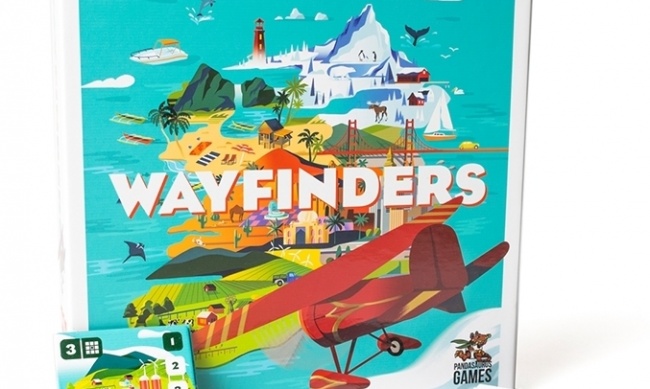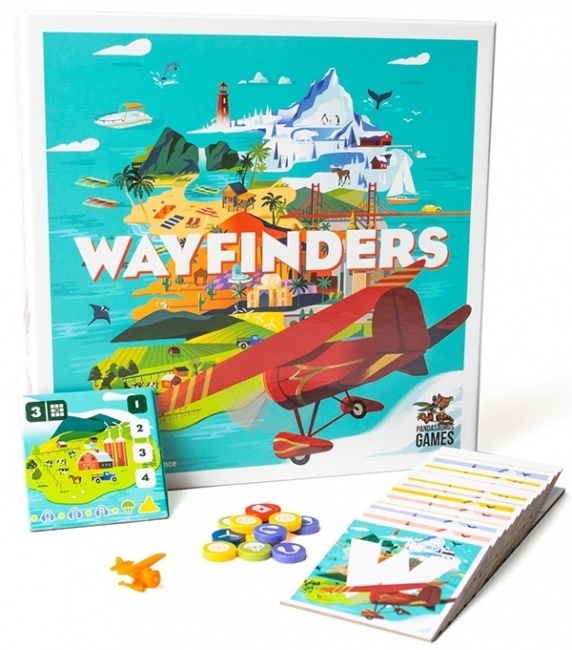Wayfinders
Publisher: Pandasaurus Games
Release Date: November 2019
Price: $39.95
Creator(s): Thomas Dagenais-Lesperance, Design; Jonathan Gilmour, Development; Gica Tam, Illustrations
Format: Worker placement and area control.
Age Rating: 10+
Play time: Approx. 45 min.
ICv2 Rating: 4 Stars out of 5
This is a game that is light enough to teach quickly, but interesting enough that it will entice players to want to play again. The game is very tactical, rather than strategic, because many decisions need to be made based on what can happen right at the moment, rather than based on planning for several turns in advance.
Because the board is randomly generated from a set of tiles, it takes a few moments to set up for each play, but that is very quick once players learn the basic concept. The only delay is in reading the building costs and bonus icons for the islands.
Each turn consists of either placing a worker on a space to later gain resources, or calling in those workers and gathering the resources available to them at that time. On turns when the workers are returned to you, you can also move your plane from one island to another, and if you have the resources, build airfields. Both moving and building cost goods, although moving gets cheaper as the game progresses, because movement to an island with an existing airstrip is free. Building airstrips is what determines the length of the game, but building them in the best places is what determines who wins. Each island has bonuses for builders, whether it’s an immediate bonus of materials, an improvement in what you are allowed to do, or a scoring bonus for the end of the game. The first builder on each island also gains income each time someone else builds on that same island. Subsequent builders get the island bonus, but not the income.
During the game, players have to make a lot of choices, but they are usually simple. You have five workers, but often pull them back before you have placed all five, in order to get the best assortment of goods for use, because you can only store a limited amount.
The game’s setup, which randomizes the position of islands drawn from a larger pool, means that you can’t “learn” the map. Each game’s setup will be different, and require different choices. This, along with the random draw of goods, are the only luck factors. The skill needed is to make the best use of the layout and your goods, in order to score the most points.
The game’s components are excellent. Each player has a marker that is a small airplane, and each airfield you build is represented by a small airplane hangar. Tokens for goods are simple and easy to tell apart.
The suggested time of 45 minutes is pretty accurate, although first time players will need a few extra minutes to understand the icons on the island. They are small and easily covered up if there is a plane on the island. That, and the icons for the cost of building an airfield, are the only weakness to the design, both artistically and in terms of play mechanics. The game is definitely best played in good light.
This game should appeal to players who like games such as Ticket to Ride, but it is also a very good filler game for players who play mainly more complex games.
--Nick Smith: Library Technician, Community Services, for the Pasadena Public Library in California.

ICv2 Stars: 4 (out of 5)
Posted by Nick Smith on November 12, 2019 @ 12:35 pm CT



